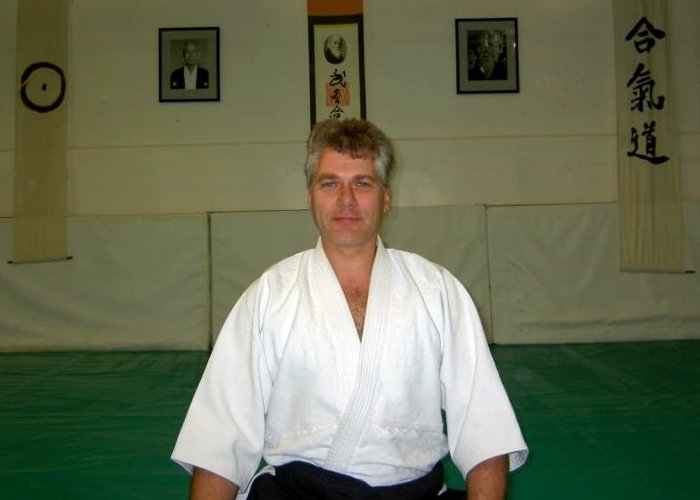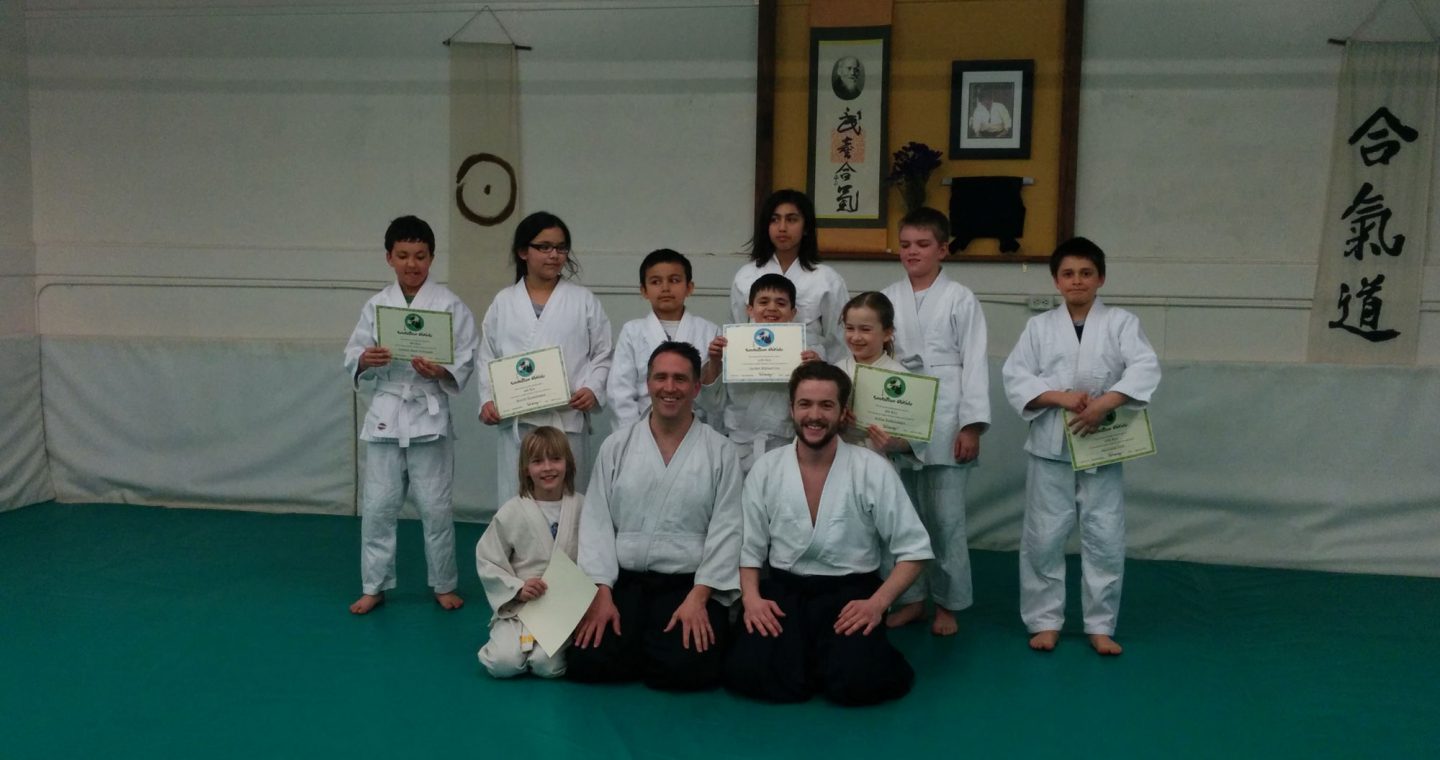Classes

We offer weekly classes to students of all ages and abilities. Whether you are looking to stay fit and flexible while learning practical self-defence techniques, learn about Japanese history and the spiritual aspects of Aikido, or simply enjoy the company of fellow open-minded people, Aikido has something for everyone. We are always accepting new students, so feel free to drop-in to watch a class.
The actual format of each class is at the discretion of the instructor; classes are tailored to fit the members present at that class. All students, beginners and seniors alike, may attend as many or as few sessions as they wish. The classes are ongoing and new students may join at any time.
The head instructor of our dojo is Don Ragush Sensei. He is a 6th degree black belt (Rokudan). He has been practicing for more than 30 years and believes that everyone can find what they are looking for in Aikido. His calm demeanour on and off the mats is proof of this, as he wants everyone to train to achieve what they seek personally. In his life off the mats, Don is a nurse and enjoys basketball, running, and gardening.
Children’s Aikido
For the young Aikidoka, we offer a weekly children’s class that focuses on the basics of Aikido, with emphasis on fun, fitness, and cooperation. The children’s class runs from mid-September to mid-December, and from mid-January to mid-April. We accept children ages 6 and up, but if your child is in their mid-teens, they might be better suited for the adult class. The children’s class is lead by Ilia Rudnitskiy, 2nd degree black belt (Nidan), and Aaron White, 1st degree black belt (Shodan). Please contact us if you are thinking about enrolling your child, as we have limited spots in this class.

Ranking
Students of Aikido start by working towards gokyu (5th rank), and progress through yonkyu (4th), sankyu (3rd), nikyu (2nd), and ikkyu (1st rank), followed by shodan (1st degree black belt), nidan (2nd degree black belt), etc. Students are eligible to be tested for a kyu grading after completing a specified number of hours practice and if the sensei feels the student has gained proficiency in the techniques required for that rank. Testing for higher ranks is usually done at the spring and fall seminars.
A Word to Beginners
A journey of a thousand miles begins with a footstep.
Tao Te Ching – 64
Aikido can at first appear to be bewildering in its complexity. The movements which advanced students perform with apparent effortless power and flow seem, when you first attempt them, to require an incomprehensible coordination of limbs, balance, thought and effort. Take heart. Those advanced students spent considerable time with tangled arms, legs and thoughts to be able to move as they do. You too must serve this apprenticeship. The major trying point for most beginners appears to be after the first month or two . The initial thrill of starting a new activity has worn off, you are working hard but don’t seem to be making any progress – if anything you feel less coordinated and more confused than when you started. This is a normal reaction; you are in fact learning and progressing. What is happening is you are becoming more aware, both of you own movements and of what you see in others’ movements. Your brain and body just haven’t caught up yet to your increased perceptions so there is a bigger gap between what you know and what you can do than when you started. The way past this hurdle is to take a really good look at what you were like when you started and compare it to what you can do now – if you are truthful with yourself you will see that there has been progress. Keep at it – we are all students.
Those who master themselves have strength.
Tao Te Ching – 33
Etiquette
Etiquette is an important part of the discipline. Aikido has its roots in Japanese culture; as part of the heritage of the art, Japanese terminology is used and certain aspects of Japanese etiquette are adhered to in the dojo. It is not too complex and students are not expected to perform faultlessly at first; just follow the senior students when in doubt.
Bowing (rei) is used to show respect, gratitude or apology.
Bow from the sitting position (seiza):
- when first stepping onto the mat
- to O-Sensei at the formal beginning of class
- to O-Sensei and the instructor in turn (whole class)
- to your partner when beginning and after practicing a technique
- after you accidentally bump someone or make a mistake in practice
- to O-Sensei when leaving the mats
The bow is usually accompanied by one of the following expressions:
- Onegai shimasu (pronounced oh-neh-guy-she-mass): roughly meaning “please”, as in “please instruct me” or “please practice with me”; said to sensei at the beginning of class, after he gives instruction for a technique, and to ask a partner to practice with you.
- Doumo arigatou gozaimashita (pronounced doh-mo-ah-ree-ga-toh go-zai-mash-tah): meaning “thank you very much”; said to your partner after practicing a technique and to sensei at the end of practice.
- Sumimasen (pronounced soo-mi-ma-senn): meaning “I’m sorry”; after a bump or mistake.
Bow from standing whenever you enter or leave the dojo.
Be changed and on the mats before the posted practice times. When sensei begins the class, students line up in seiza (sitting), with the highest ranked person at the right-hand end of the line; all other students may line up in random order. If you arrive late, sit at the edge of the mats, bow to O-Sensei, wait in seiza until sensei gives you permission to join the class, then bow to sensei and begin practice. If you have to leave the mats during class, ask sensei for permission.
After a technique has been practiced, sensei will clap to signal the end of that technique; quickly line up sitting in seiza (order of rank does not matter) to watch the demonstration of the next technique. During class, discussion should be minimal; try to learn through senses other than hearing. Watch closely, try to get the feel of the movements, ask only when you do not understand. If it is necessary to speak, do so quietly.
Personal hygiene reflects your attitude and respect for yourself, the discipline, and your fellow practitioners. Keep your dogi and yourself clean. Fingernails and toenails must be kept short. Long hair should be tied back. All jewellery must be removed. No shoes are allowed on the mats; please remove your shoes and leave them outside the door.